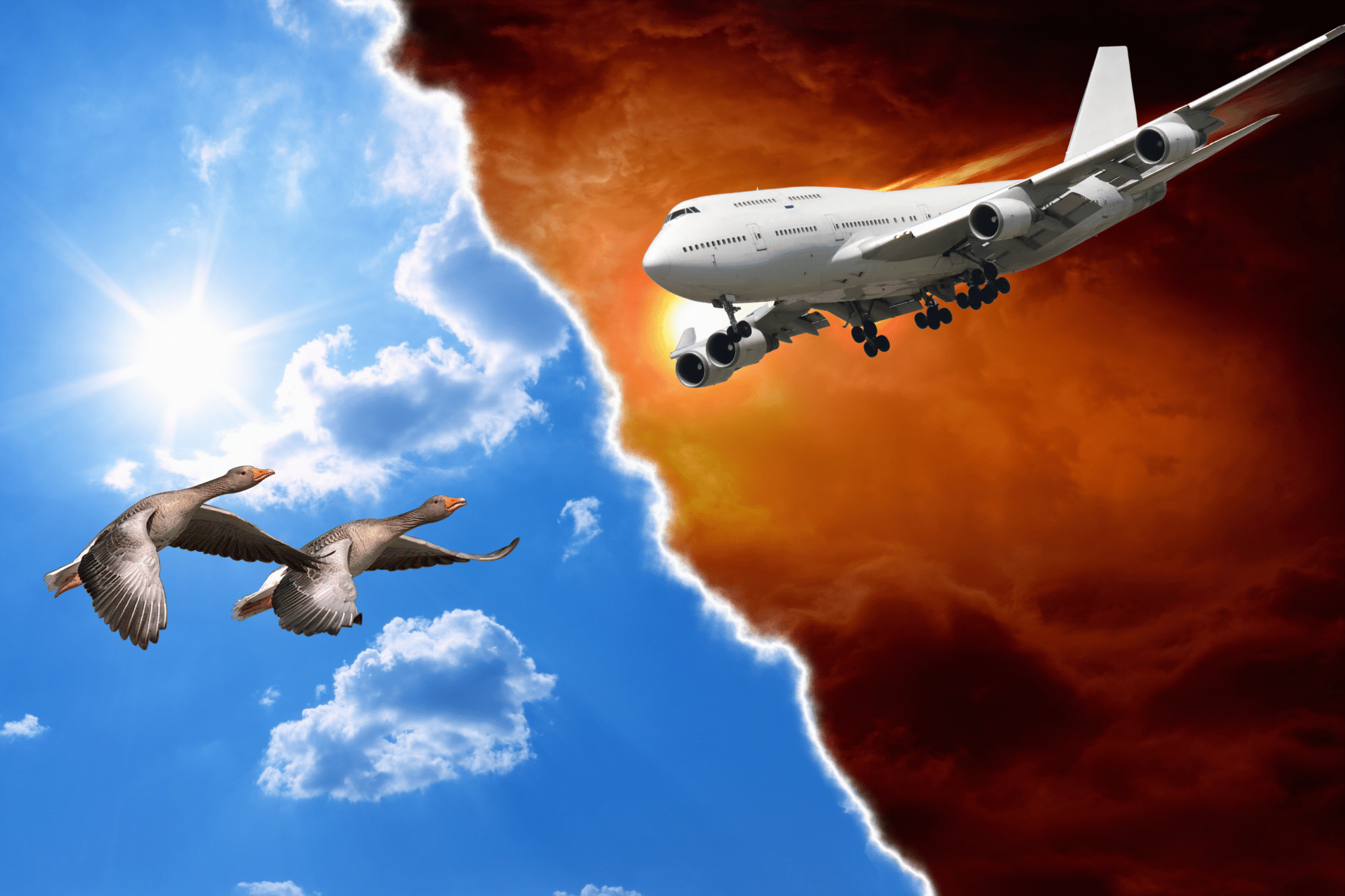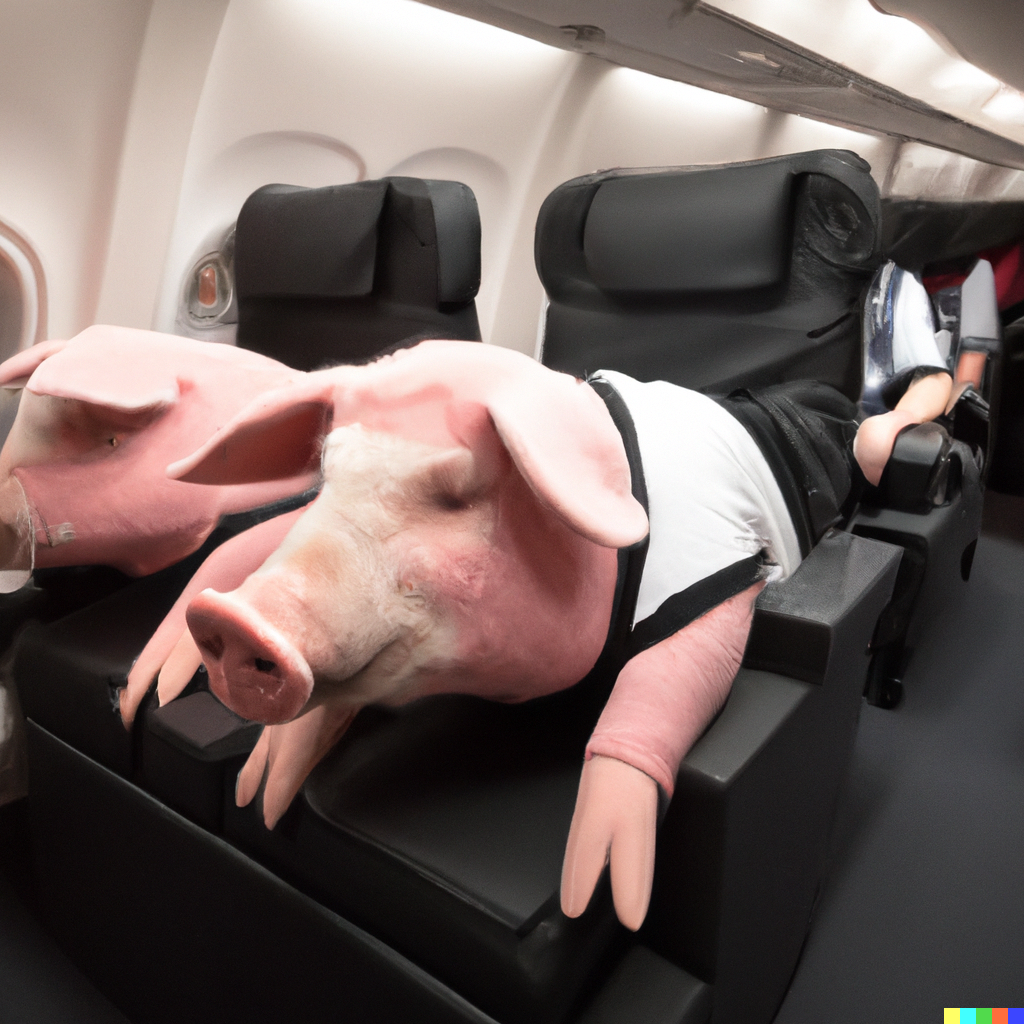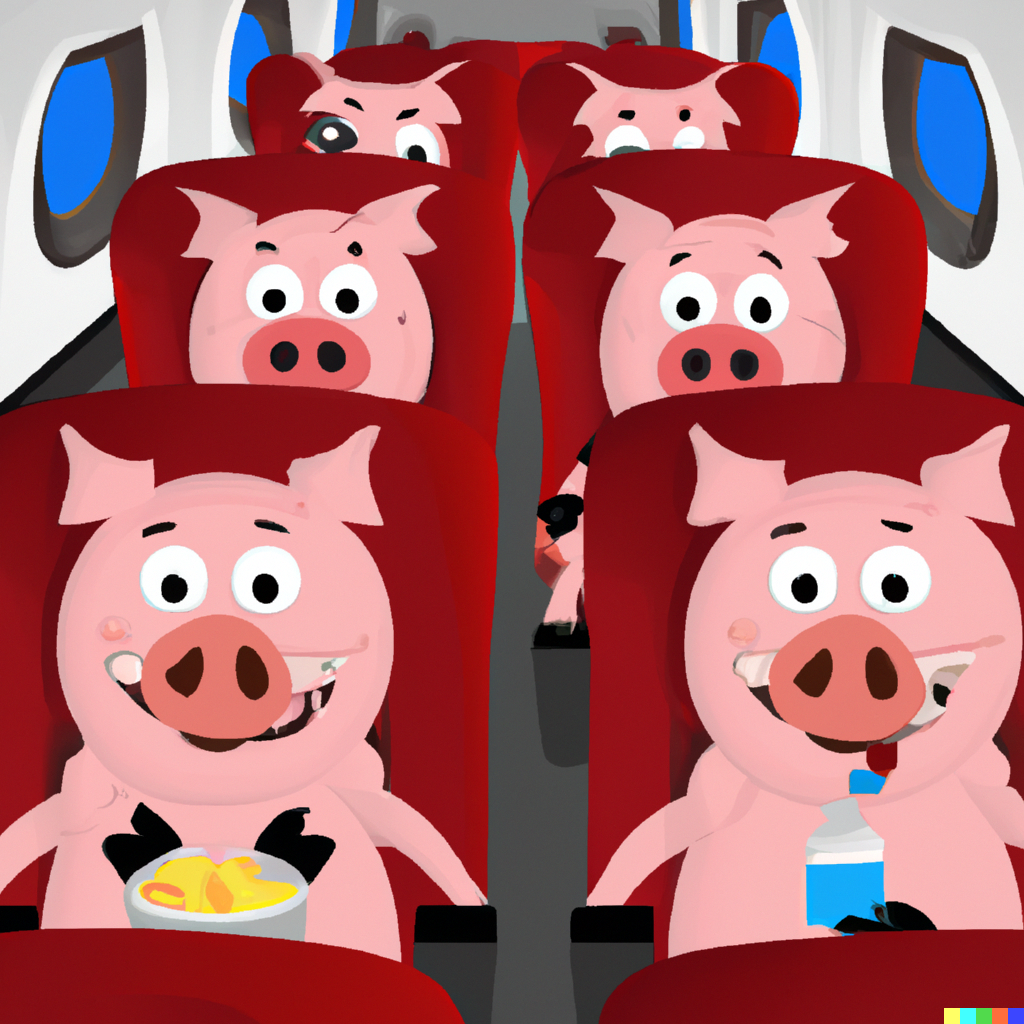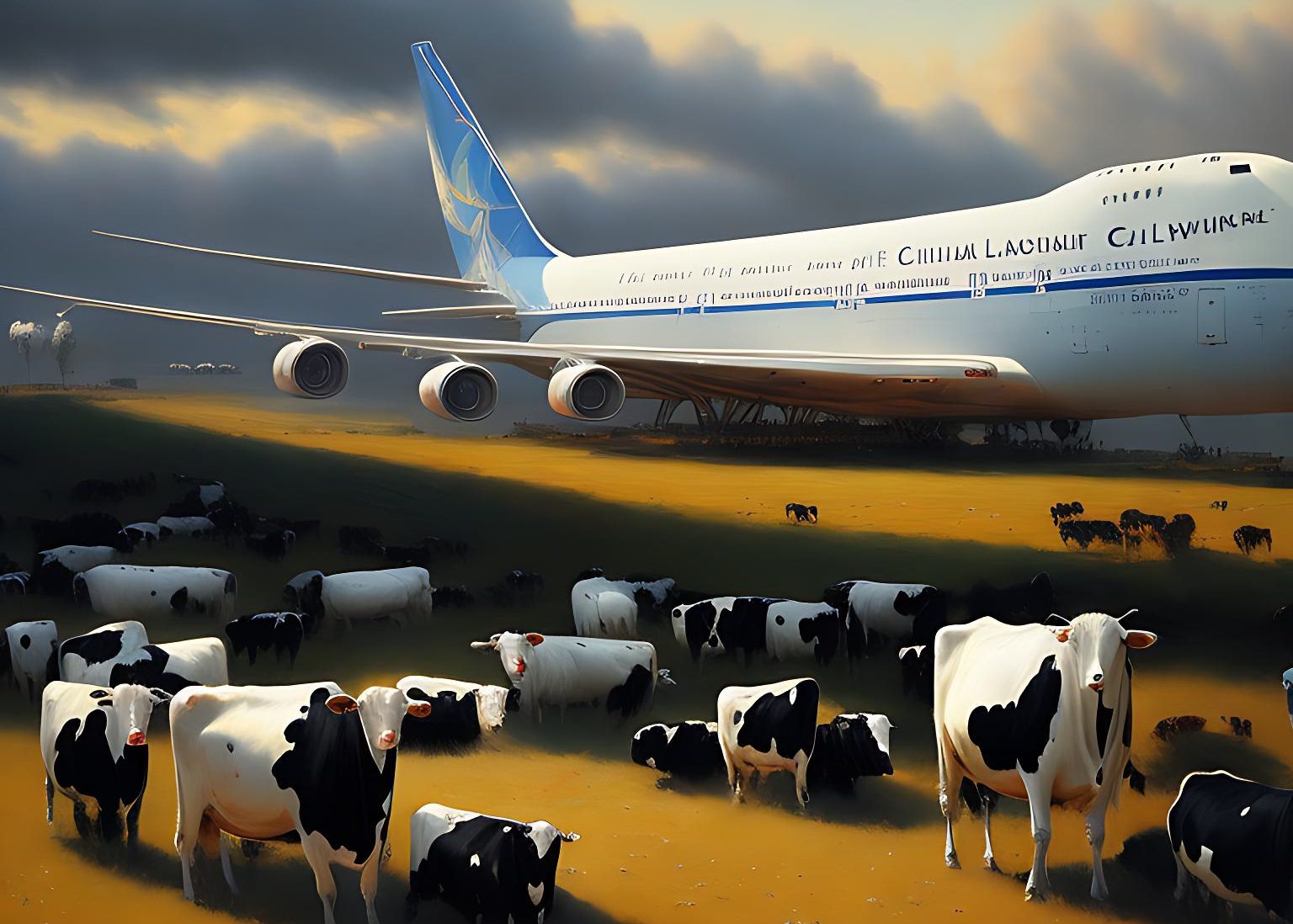
Written by Chat GPT
March 30, 2023

Introduction: An intriguing question has been posed: How many animals would it take to weigh down a Boeing 747 so that it is unable to take off, and could these animals be logistically accommodated within the aircraft?
Section 1: The Geese Conundrum
1.1 Weight of geese and the Boeing 747 To determine the number of geese required to weigh down a Boeing 747, we first need to establish the average weight of a goose and the maximum takeoff weight of the aircraft. For our calculations, we will consider the Canada goose with an average weight of 12 lbs (5.4 kg) and the Boeing 747-400 with a maximum takeoff weight of 910,000 lbs (412,770 kg).
1.2 Estimated number of geese By dividing the maximum takeoff weight of the Boeing 747 by the weight of a single goose, we find that approximately 75,834 geese would be needed to weigh down the aircraft.
1.3 Geese accommodation challenges Despite the intriguing nature of this question, the practicality of accommodating 75,834 geese within the Boeing 747 is highly questionable. Our estimates indicate that only around 3,825 geese could fit within the aircraft, considering its total internal volume of 35,947 cubic feet (1,018 m³). This is far lower than the required number of geese to weigh down the plane.

Section 2: The Cow Alternative
2.1 Weight of cows and the Boeing 747
As an alternative, we consider using cows to weigh down the Boeing 747. For this example, we will use the Holstein breed, which has an average weight of 1,500 lbs (680 kg).
2.2 Estimated number of cows
Similar to the geese calculation, we divide the maximum takeoff weight of the Boeing 747 by the weight of a single cow. This results in approximately 607 cows needed to weigh down the aircraft.
2.3 Cow accommodation feasibility
Although the number of cows required is significantly lower than the number of geese, our calculations reveal that only around 187 cows could fit within the aircraft, considering its total volume. This is still not enough to weigh down the plane. However, if we were to consider a smaller breed of cow, such as the Dexter cattle, it might be possible to fit enough cows to weigh down the aircraft.
Section 3: Dexter Cattle – A Potential Solution?
3.1 Weight of Dexter cattle and the Boeing 747
As a smaller alternative to Holstein cows, we consider using Dexter cattle to weigh down the Boeing 747. Dexter cattle have an average weight of about 750 lbs (340 kg).
3.2 Estimated number of Dexter cattle
By dividing the maximum takeoff weight of the Boeing 747 by the weight of a single Dexter cow, we find that approximately 1,214 Dexter cattle would be needed to weigh down the aircraft.
3.3 Dexter cattle accommodation feasibility
Dexter cattle are smaller than Holstein cows, with an estimated required space of 6 ft (1.83 m) in length, 3 ft (0.91 m) in width, and 5 ft (1.52 m) in height. This gives a volume of 90 cubic feet (2.55 m³) per cow.
Total Dexter cattle capacity = Available space inside the Boeing 747 / Space required per Dexter cow
Total Dexter cattle capacity = 35,947 cubic feet / 90 cubic feet = 399.41
Our calculations reveal that about 399 Dexter cattle could fit within the aircraft, considering its total volume. This is still not enough to weigh down the plane, as 1,214 Dexter cattle are needed. We have already examined geese, Holstein cows, and Dexter cattle, but none of these animals provided a viable solution. Now, we will explore another candidate: pigs.


Section 4: Pigs – A More Promising Prospect?
4.1 Weight of pigs and the Boeing 747
For this example, we will consider the domestic pig, which has an average weight of around 600 lbs (272 kg) for a fully grown adult.
4.2 Estimated number of pigs
By dividing the maximum takeoff weight of the Boeing 747 (910,000 lbs or 412,770 kg) by the weight of a single pig, we find that approximately 1,517 pigs would be needed to weigh down the aircraft.
4.3 Pig accommodation feasibility
Pigs are smaller and more compact than cows. Assuming each pig requires a rectangular space with dimensions of approximately 4 ft (1.22 m) in length, 2.5 ft (0.76 m) in width, and 3 ft (0.91 m) in height, this gives a volume of 30 cubic feet (0.85 m³) per pig.
Total pig capacity = Available space inside the Boeing 747 / Space required per pig
Total pig capacity = 35,947 cubic feet / 30 cubic feet = 1,198
Our calculations reveal that about 1,198 pigs could fit within the aircraft, considering its total volume. This number is very close to the 1,517 pigs needed to weigh down the plane. Although it still falls short, it represents the most promising animal candidate among those considered so far.
Conclusion:
The thought experiment of weighing down a Boeing 747 with animals presents challenges in terms of both the number of animals required and the practicality of accommodating them within the aircraft. While pigs emerged as the most promising candidate, even they did not provide a perfect solution. It is important to recognize the numerous logistical and ethical considerations that would arise in a real-world scenario. Ultimately, this question serves as an entertaining exercise in problem-solving and critical thinking.
Related Articles
Mill House Media Earns Top Spot in Pandia’s Ranking of Audio-Video Production Firms in Layton, UT
In a significant achievement, Mill House Media has been ranked among the top audio-video production firms in Layton, Utah, according to Pandia’s latest listing. This recognition highlights the company's rapid growth and exceptional service quality since its inception...
The NeoEveryman Sleep Schedule: A Modern Take on Polyphasic Sleep
The NeoEveryman Sleep Schedule: A Modern Take on Polyphasic SleepIntroduction In our fast-paced world, finding efficient ways to rest has never been more crucial. Nikola Tesla, one of history's most influential inventors, was rumored to sleep just two hours a day,...
The Digital Hoarding Dilemma: A Thought Experiment on the Future Impact of Data Accumulation
Explore the future consequences of digital hoarding, including emotional overload, privacy and security risks, and environmental impacts, as society navigates the challenges of data accumulation.




